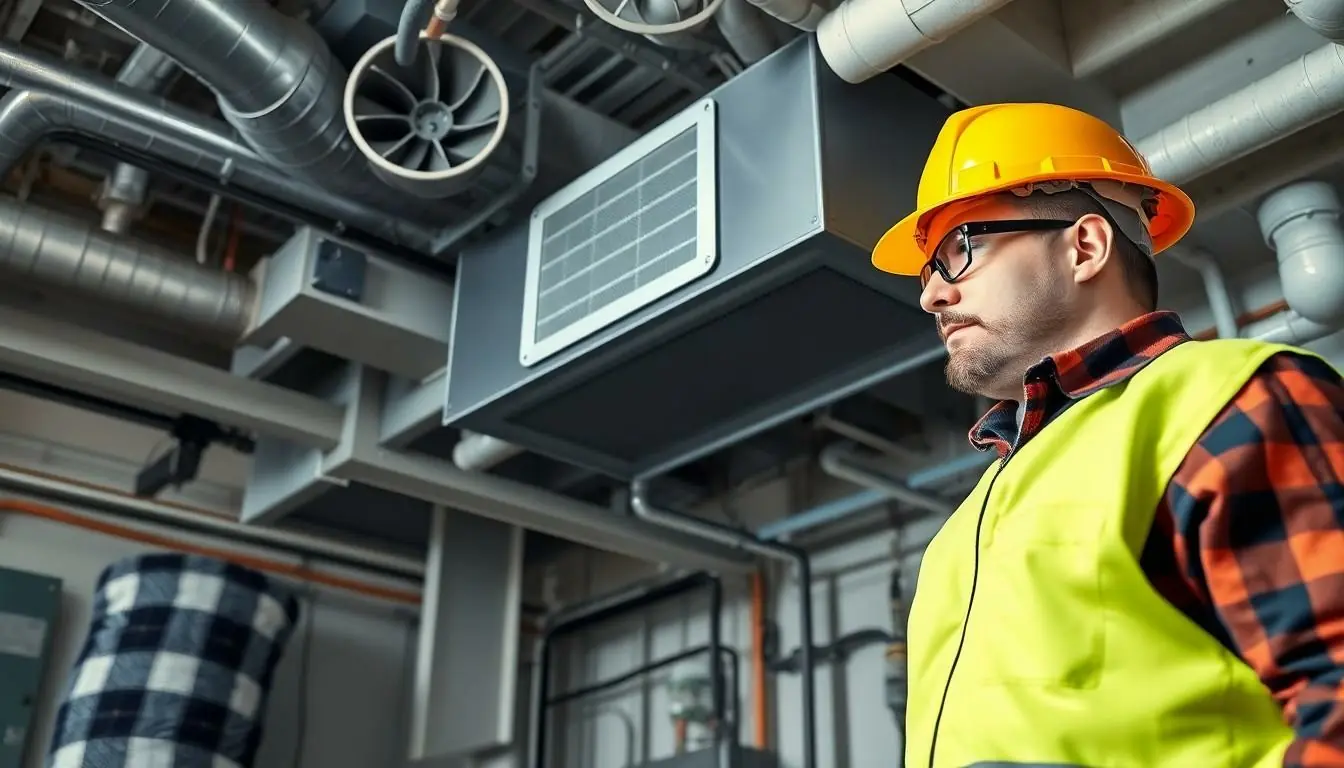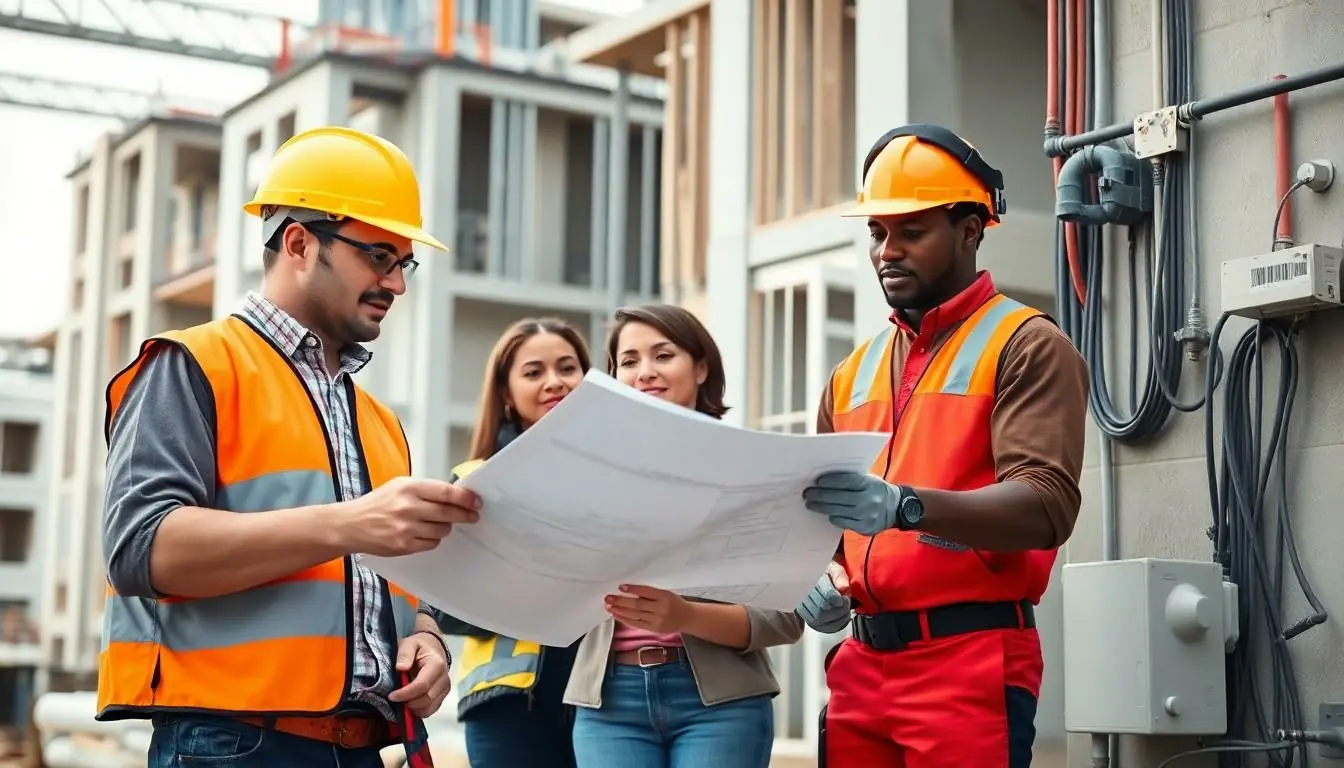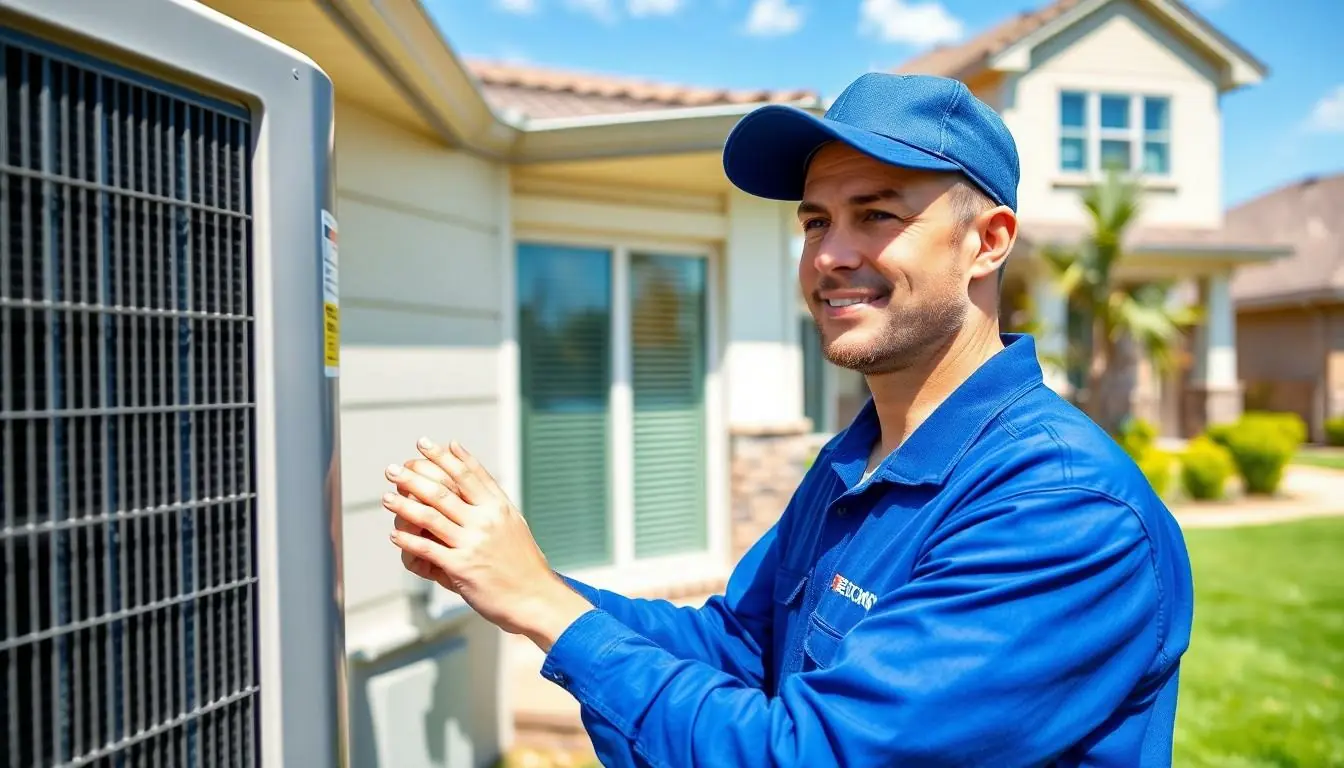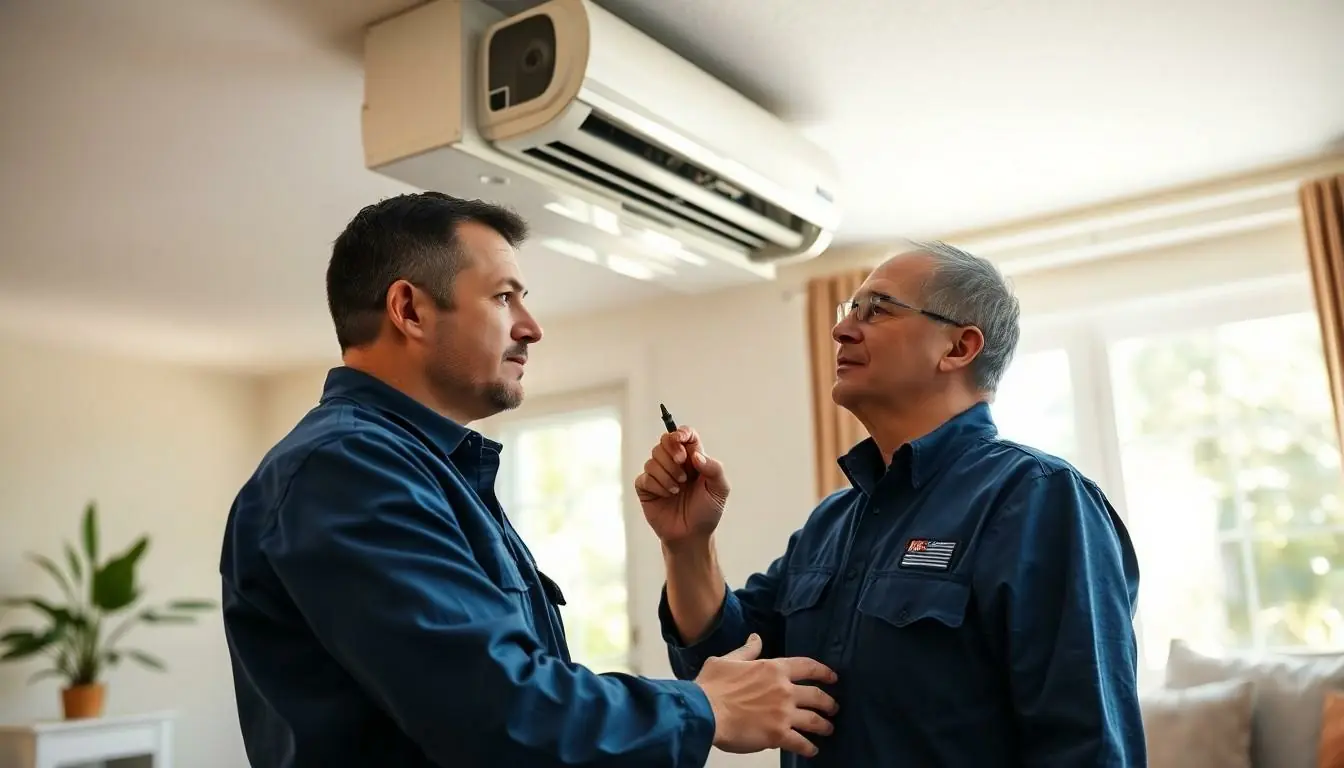In the world of construction and building design, mechanical electrical plumbing (MEP) is the unsung hero. It’s the behind-the-scenes wizardry that keeps everything running smoothly. Imagine a bustling office or a cozy home without proper heating, lighting, or plumbing—it’d be chaos! MEP ensures that our spaces are not just functional but also comfortable and efficient.
Table of Contents
ToggleOverview of Mechanical Electrical Plumbing
Mechanical electrical plumbing (MEP) encompasses the integration of mechanical, electrical, and plumbing systems within building designs. Essential systems in MEP efficiently support heating, lighting, and plumbing needs. Properly designed MEP systems enhance energy efficiency and optimize resource use across various environments.
Heating systems regulate indoor temperatures, ensuring comfort during extreme weather conditions. Water supply and drainage systems facilitate seamless water movement throughout buildings. Electrical systems provide crucial power for lighting and appliances, contributing to overall functionality.
Awell-coordinated MEP design minimizes potential conflicts among the three disciplines, improving construction efficiency. Multidisciplinary teams collaborate to address issues such as space limitations and load calculations. Adopting advanced technologies in MEP systems streamlines maintenance processes and extends equipment lifespan.
Building codes and regulations impose strict guidelines on MEP installations. Compliance ensures safety, efficiency, and environmental considerations are met. Many projects incorporate sustainable practices, including energy-efficient lighting and low-flow plumbing fixtures, to minimize environmental impact.
Training and certification for MEP professionals emphasize the need for expertise in the latest techniques and technologies. Continuous education keeps professionals informed about evolving standards and practices. Investing in MEP systems proves beneficial for longevity, operational savings, and occupant comfort.
Key Components of Mechanical Electrical Plumbing

Mechanical electrical plumbing integrates essential systems that enhance the functionality and efficiency of buildings. Each component plays a distinct yet interconnected role.
Mechanical Systems
Mechanical systems in MEP include heating, ventilation, and air conditioning (HVAC) components. These systems maintain comfortable indoor temperatures and improve overall air quality. Efficient HVAC design adjusts to occupancy levels and climate conditions, allowing for energy conservation. Equipment like boilers, chillers, and ductwork works together to circulate air effectively. Proper installation and regular maintenance of mechanical systems guarantee reliable performance and longevity.
Electrical Systems
Electrical systems supply power to lighting, appliances, and other essential technologies within a building. These components include wiring, circuit breakers, and electrical panels, which distribute electricity safely and efficiently. Well-designed electrical systems prevent overloads and ensure compliance with safety codes. Integration of advanced technologies, like smart lighting and energy management systems, further optimizes energy use. Effective coordination with other disciplines enhances functionality and simplifies troubleshooting.
Plumbing Systems
Plumbing systems consist of the infrastructure for water supply, drainage, and waste management. This includes pipes, fixtures, and valves that manage both fresh and wastewater. Designed for reliability, these systems ensure that water flows efficiently and prevents leaks or blockages. Drainage systems lower the risk of flooding, making smooth operations possible. Utilizing sustainable materials and practices, plumbing designs can significantly reduce water consumption and promote environmental stewardship.
Importance in Construction Projects
Mechanical electrical plumbing (MEP) plays a vital role in the success of construction projects. It enhances functionality and contributes to the overall quality of building designs.
Efficiency and Sustainability
Energy-efficient MEP systems contribute significantly to long-term savings. They minimize energy consumption through optimized heating, ventilation, and air conditioning (HVAC) designs. Incorporating sustainable plumbing practices, like graywater recycling, reduces water waste and conserves resources. Innovative electrical systems utilize smart technology to monitor and manage energy use effectively. Prioritizing these efficiencies leads to lower operational costs and supports environmental stewardship.
Safety Regulations
Adhering to safety regulations ensures MEP systems operate efficiently and safely. Building codes govern the installation and maintenance of mechanical, electrical, and plumbing components. Compliance with these codes minimizes risks associated with faulty installations, such as electrical fires or plumbing failures. Training MEP professionals in these regulations fosters a safe working environment and ensures high standards of construction quality. Regular inspections during the construction process help identify potential issues before they escalate, protecting both workers and future occupants.
Challenges in Mechanical Electrical Plumbing
Mechanical electrical plumbing (MEP) faces several challenges during the design and implementation phases. Integrating MEP systems requires precise coordination among various disciplines to function effectively.
Integration of Systems
Success hinges on the seamless integration of mechanical, electrical, and plumbing components. Miscommunication among teams often leads to conflicts, resulting in construction delays and increased costs. Effective collaboration programs help mitigate these issues, promoting teamwork and shared objectives. Utilizing advanced software tools facilitates better planning and visualizations, allowing engineers to foresee potential clashes. Adopting building information modeling (BIM) provides a comprehensive view, improving system compatibility and reducing errors during installation.
Maintenance and Upgrades
Ongoing maintenance presents another significant challenge for MEP systems. Frequent inspections contribute to identifying potential issues before they escalate, yet many systems remain neglected, leading to costly repairs. Upgrades also pose challenges as technology evolves rapidly. Staying current requires continuous education for MEP professionals to understand new approaches and solutions. Implementing regular testing protocols ensures optimal performance across systems, directly affecting energy efficiency and operational costs. Balancing maintenance and upgrades demands careful planning to maintain system reliability without disrupting daily operations.
Future Trends in Mechanical Electrical Plumbing
Emerging technologies are transforming mechanical electrical plumbing (MEP) systems. Smart building innovations focus on automation and energy efficiency. These advancements enhance system management and occupant comfort significantly.
Artificial intelligence and the Internet of Things (IoT) play pivotal roles. Sensors monitor usage patterns, detecting inefficiencies in real-time. Data analysis provides insights, allowing for predictive maintenance and reducing downtime effectively.
Sustainability is another priority. Water conservation and energy-efficient designs dominate conversations in the industry. Greywater recycling systems become increasingly popular, promoting environmental stewardship.
Collaboration among disciplines is enhancing MEP design processes. Integrated project delivery (IPD) fosters teamwork among architects, engineers, and contractors. Improved communication results in streamlined construction and fewer conflicts overall.
Training remains essential for MEP professionals as technologies evolve. Regular certification ensures skills align with current standards. Continuous education promotes awareness about emerging best practices, which maximizes system effectiveness.
Regulatory compliance is crucial for safety and performance. Code updates reflect the latest technologies and sustainability measures. Staying informed prevents costly errors and maintains high construction standards.
Adoption of building information modeling (BIM) technologies is rising. BIM enhances visualization and coordination across all MEP disciplines. Users can detect potential clashes early, saving time and resources during construction.
Digital twin technology also influences MEP design. It offers virtual replicas of physical systems for ongoing monitoring. This capability supports long-term maintenance strategies, optimizing performance and prolonging system life.
Mechanical electrical plumbing is integral to modern construction and building efficiency. Its impact on comfort and functionality cannot be overstated. By ensuring seamless integration of mechanical, electrical, and plumbing systems, MEP enhances energy efficiency and promotes sustainable practices.
As the industry evolves, embracing innovative technologies like smart systems and building information modeling becomes essential. Continuous training for MEP professionals ensures they remain equipped to tackle emerging challenges and adapt to new trends. Prioritizing regulatory compliance and effective collaboration among disciplines will lead to safer and more reliable building environments. Ultimately, investing in robust MEP systems translates to long-term savings and enhanced occupant satisfaction.







